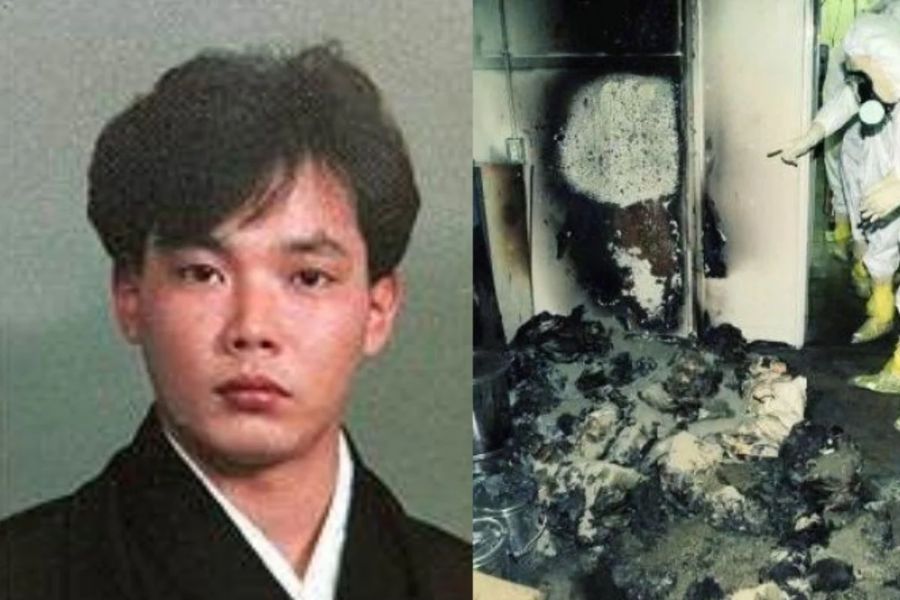Understanding The Tragic Story Behind Hisashi Ouchi's Face
Hisashi Ouchi's face tells a tale of resilience and tragedy; a story that not only highlights the human spirit but also sheds light on the consequences of industrial accidents. Hisashi Ouchi was a victim of one of the worst nuclear accidents in history, which left an indelible mark on not just his life but also the lives of many others. The scars on his face serve as a constant reminder of the horrors he endured and the tenacity with which he fought for survival. Beyond the physical aspects, Ouchi's story represents a critical intersection of technology, safety, and human life. In this article, we will explore the life of Hisashi Ouchi, the events that led to his tragic fate, and how his face became a symbol of both suffering and survival.
In the wake of the catastrophic accident at the Tokaimura nuclear facility in Japan, Ouchi's life was irrevocably changed. The incident not only caused immense physical harm but also sparked a national conversation about nuclear safety and emergency preparedness. Hisashi Ouchi's face, once unmarked, became a canvas for the physical and emotional scars he carried after the accident. This article aims to delve into the details of his biography, the accident, and its aftermath, while also reflecting on the broader implications for society.
As we explore the story of Hisashi Ouchi, it is essential to understand the human side of this tragedy. What does his face represent? How did it affect his life and the lives of those around him? This article will answer these questions and provide insights into the resilience of the human spirit in the face of unimaginable adversity.
What is the Biography of Hisashi Ouchi?
Hisashi Ouchi was born on March 21, 1965, in Ibaraki, Japan. He was a promising young worker at the Tokaimura nuclear facility, where he was involved in the processing of uranium. However, his life took a tragic turn on September 30, 1999, when a criticality accident occurred, leading to severe radiation exposure. Ouchi was one of the three workers affected, but he suffered the most severe consequences.
| Personal Details | Information |
|---|---|
| Name | Hisashi Ouchi |
| Date of Birth | March 21, 1965 |
| Nationality | Japanese |
| Occupation | Nuclear Facility Worker |
| Date of Accident | September 30, 1999 |
| Location of Accident | Tokaimura, Japan |
| Outcome | Severe Radiation Burns |
What Happened During the Tokaimura Nuclear Accident?
The Tokaimura accident was a pivotal moment in the history of nuclear energy in Japan. It was caused by a combination of human error and inadequate safety protocols, which resulted in a criticality accident. During the process of mixing uranium, the workers, including Ouchi, made a critical mistake by using an improper amount of uranium. This led to a massive release of radiation, which severely affected all three workers involved.
How Did Hisashi Ouchi's Face Change After the Accident?
The radiation exposure Ouchi endured was catastrophic. Hisashi Ouchi's face and body were severely burned due to the intense radiation. The physical scars left on his face were a permanent reminder of the accident and the suffering he experienced. Medical professionals struggled to treat his injuries, and the images of his face became symbolic of the dangers associated with nuclear energy.
What Were the Medical Consequences for Hisashi Ouchi?
The medical journey for Hisashi Ouchi was filled with challenges. Following the accident, he was hospitalized and underwent extensive treatments, including multiple surgeries and therapies aimed at healing the radiation burns. Despite the best efforts of medical professionals, his condition was dire, and he suffered from severe complications.
- Severe radiation burns on over 90% of his body
- Multiple organ failure
- Extreme pain and suffering
- Prolonged hospitalization
- Psychological trauma
What Impact Did Hisashi Ouchi's Story Have on Nuclear Safety Regulations?
The tragic story of Hisashi Ouchi served as a wake-up call for Japan and the global community regarding nuclear safety. Following the accident, there was a significant push for stricter regulations and improved safety protocols in nuclear facilities. The incident highlighted the need for better training and awareness among workers and management to prevent future accidents.
How Did the Public React to Hisashi Ouchi's Situation?
Hisashi Ouchi's face and story garnered widespread media attention, sparking public outrage and concern over nuclear safety. Many people sympathized with his suffering and questioned the adequacy of safety measures in nuclear facilities. The public reaction led to protests and calls for transparency in nuclear operations, pushing the government to take action.
What Legacy Did Hisashi Ouchi Leave Behind?
Hisashi Ouchi's legacy is one of both tragedy and resilience. While his life was cut short due to the horrors of the nuclear accident, his story continues to resonate with those who advocate for safety and accountability in industrial practices. Hisashi Ouchi's face, marked by pain and suffering, serves as a constant reminder of the human cost of negligence in the pursuit of technological advancement.
In conclusion, Hisashi Ouchi's face is more than just a physical representation of a tragic accident; it embodies the struggle for safety, awareness, and the importance of human life in the context of industrial progress. As we reflect on his story, it is crucial to remember the lessons learned and to advocate for a safer future for all.
Exploring The Lives Of Robert Plant's Children
Discovering The Authenticity Of Hisashi: Real Photos And Insights
Exploring The Reality Behind Hisashi Ouchi Pictures


